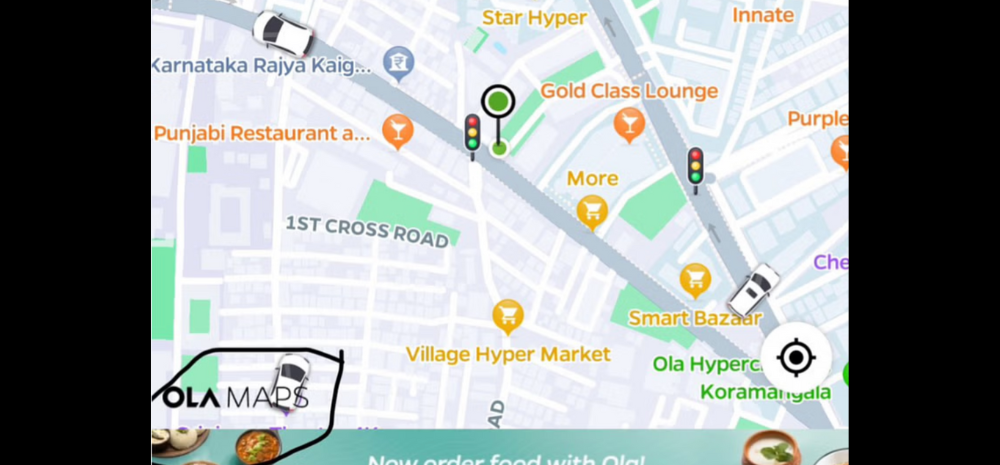Ola Cabs, a leading ride-hailing company, has made a significant strategic shift by transitioning from Google Maps to its own proprietary Ola Maps. This move, announced by CEO Bhavish Aggarwal, is expected to save the company Rs 100 crore annually. The transition follows the company’s recent departure from Microsoft Azure, marking a notable shift in Ola’s technological infrastructure.

A Strategic Transition
Bhavish Aggarwal, the CEO of Ola Cabs, revealed the transition in a post on X (formerly Twitter). He highlighted the substantial savings the company will achieve by moving away from Google Maps. “We used to spend Rs 100 crore a year, but we’ve made that zero this month by moving completely to our in-house Ola Maps! Check your Ola app and update if needed,” Aggarwal stated. This strategic move is part of a broader effort to bring more technological processes in-house, enhancing control and reducing costs.
Enhancing the Ola Experience with New Features
With the introduction of Ola Maps, users can expect a range of new features in the coming months. These include street view, neural radiance fields (NERFs), indoor images, 3D maps, and drone maps. These advancements aim to improve the user experience by providing more detailed and interactive navigation options. The Ola Maps API is also available on Krutrim Cloud, allowing other developers and businesses to leverage Ola’s mapping solutions.
The Road to In-House Solutions
This transition to Ola Maps comes three months after Ola Group fully integrated its operations with Krutrim, its proprietary AI company. This move away from Microsoft’s Azure was announced by Aggarwal in May, indicating a strategic pivot towards in-house technological solutions. At the launch of Krutrim AI, Ola also unveiled plans for cloud services and mapping solutions, reinforcing its commitment to self-reliance and innovation.
In October 2021, Ola acquired GeoSpoc, a Pune-based geospatial services company, which laid the groundwork for the development of Ola Maps. This acquisition has enabled Ola to support its mapping requirements internally, enhancing its ride-hailing services and future-proofing its technology stack. Additionally, Ola plans to integrate Ola Maps into its electric two-wheelers through a software update, further expanding its utility across its product range.
Looking Ahead: Innovations in Electric Mobility
In parallel with its mapping advancements, Ola Electric is exploring the development of solid-state batteries for its electric scooters. Aggarwal mentioned that the company is in the early stages of this research, aiming to integrate these batteries by next year. The solid-state batteries, to be produced at Ola’s new gigafactory in Tamil Nadu, align with the Indian government’s battery manufacturing incentive scheme and promise to enhance the performance and range of Ola’s electric scooters.
Conclusion
Ola Cabs’ transition from Google Maps to Ola Maps marks a significant milestone in the company’s journey towards technological self-reliance and innovation. With substantial cost savings and the introduction of advanced features, Ola Maps is set to enhance the user experience and pave the way for further technological advancements in Ola’s ride-hailing and electric mobility services.














